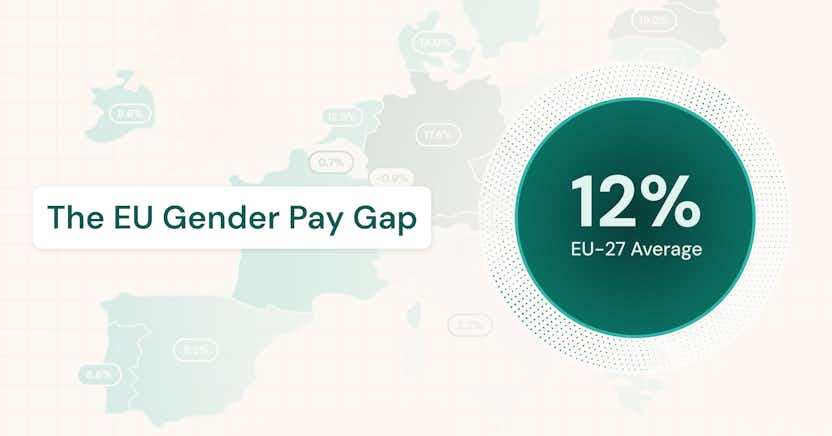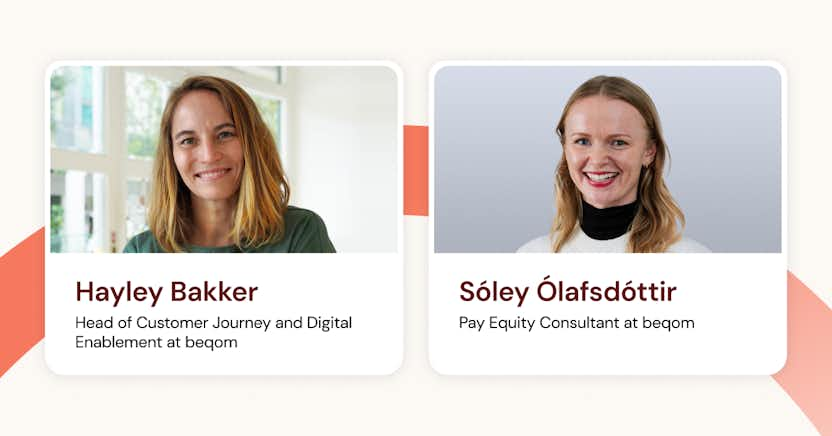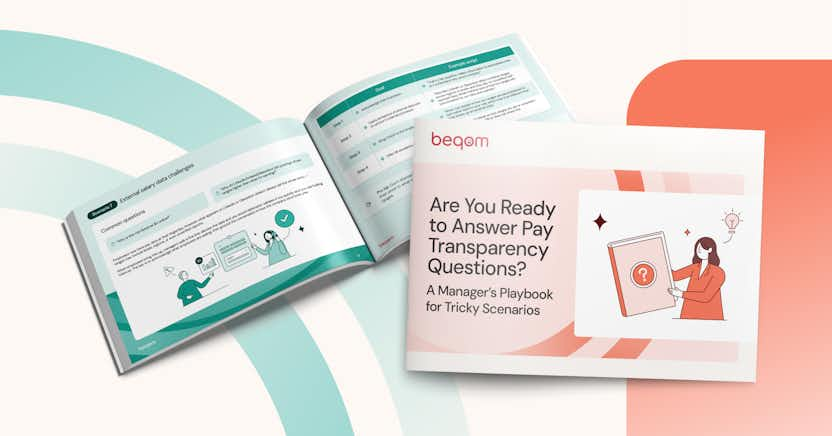What Is Employee Management Software?
Employee management software is a digital platform used to oversee and optimize employee performance, development, and engagement within an organization. It supports core HR functions such as goal setting, performance tracking, feedback management, skills development, and workforce analytics. The purpose of this software is to enable structured, consistent, and data-driven evaluation and management of employee contributions across teams, departments, and geographies.
Modern employee management software often integrates with broader HR systems, including compensation management, talent acquisition, learning and development, and payroll. It serves as a foundational component of an organization’s people strategy, enabling greater alignment between individual actions and organizational objectives.
Why is employee management software important?
The role of employee management software has grown increasingly important as organizations seek to align people performance with business performance in a rapidly evolving workplace. The complexity of managing distributed teams, hybrid work models, multigenerational workforces, and evolving employee expectations makes manual or fragmented approaches insufficient.
Employee management software provides the tools to:
- Establish clear goals and expectations for employees.
- Measure performance consistently across teams and time periods.
- Deliver timely and constructive feedback.
- Track skills, certifications, and career development.
- Enable data-informed compensation and promotion decisions.
- Support compliance with labor laws and internal governance.
Without a robust system in place, organizations may struggle to manage performance equitably, identify development opportunities, or reward employees in a timely and transparent manner.
What are the key features of employee management software?
The functionality of employee management software varies by provider and organizational use case, but most platforms offer a core set of capabilities that support the employee lifecycle.
One fundamental feature is goal and objective setting, often linked to broader organizational OKRs or KPIs. This enables alignment between employee activities and business strategy.
Performance evaluation tools provide the ability to conduct structured reviews, whether annual, semi-annual, or continuous. These may include manager assessments, peer feedback, and self-evaluations, often supported by customizable rating scales and comment fields.
Feedback management capabilities allow for real-time recognition and coaching. Many platforms incorporate 360-degree feedback models or support ongoing feedback loops that go beyond traditional review cycles.
Development and learning tracking is also common, enabling the monitoring of progress against training goals, certification requirements, or internal development programs. Integration with learning management systems is often a key component.
Workforce analytics and dashboards aggregate data to support strategic decision-making. HR and business leaders can use these insights to identify high performers, succession candidates, or areas of risk in team composition.
Some platforms also include integration with compensation management systems, enabling performance-based pay and bonus decisions to be made using up-to-date, performance-aligned data. This is particularly important for organizations aiming to support merit-based pay practices or ensure fairness through pay equity reviews.
Why do organizations need more than manual performance processes?
While many organizations historically relied on spreadsheets, email, or standalone performance reviews, such approaches are increasingly inadequate in today’s business environment. Manual processes tend to be time-consuming, inconsistent, and prone to bias or error. They lack scalability, auditability, and integration with other HR data, limiting their usefulness for strategic workforce planning.
Employee management software addresses these challenges by automating workflows, standardizing evaluations, and providing real-time data access. It ensures that performance and development processes are applied consistently, even in large or geographically dispersed organizations. Moreover, it provides the digital infrastructure required to support hybrid work, cross-functional teams, and agile planning.
With regulatory expectations and employee demands for transparency on the rise—particularly in areas like pay equity and promotion practices—organizations need reliable systems that can support defensible, data-backed decision-making.
Who benefits from employee management software?
Employee management software is used by a variety of stakeholders across the organization. Each benefits from its capabilities in different ways:
- Employees gain visibility into expectations, feedback, and growth opportunities, which can enhance engagement and ownership of their career paths.
- People managers are better equipped to evaluate, coach, and support their teams, using objective criteria and consistent processes.
- HR and compensation professionals can administer processes at scale, ensure compliance with internal and external standards, and use data to inform rewards and promotion decisions.
- Executives and business leaders can track talent metrics aligned with business performance and identify emerging workforce trends or capability gaps.
The software also facilitates collaboration between HR and finance when making budgeting or compensation decisions that are tied to performance outcomes.
What are the differences between digital and manual approaches to employee management?
Organizations can take several approaches to managing employee performance and development. The most basic involve manual or decentralized methods, such as paper-based reviews, manager notes, or ad hoc feedback. While these may suffice in very small companies, they are difficult to scale and standardize.
At the other end of the spectrum are integrated digital platforms, which centralize employee data and workflows into a single system. These can offer greater efficiency, visibility, and accountability, but may require up-front investment in system configuration, change management, and training.
Some organizations adopt hybrid approaches, using digital tools for certain processes (like annual reviews) while maintaining manual practices for others (such as ad hoc coaching). This can work in the short term but often leads to fragmentation and reduced data quality.
Choosing the right approach depends on the size, structure, and strategic priorities of the organization—but over time, the benefits of digitization tend to outweigh the costs, particularly when integration with compensation or talent systems is required.
How is employee management software different from an HRIS?
It is important to distinguish employee management software from a traditional human resource information system (HRIS). While there is some overlap, particularly in more advanced systems, the focus areas differ.
An HRIS is typically centered on administrative and compliance functions: storing employee records, tracking absences, managing payroll, and handling benefits enrollment. In contrast, employee management software focuses on performance, engagement, and development.
Many organizations use both systems in tandem, with the HRIS serving as the system of record and the employee management software providing “best of breed” tools for performance enablement. In some cases, these systems are integrated to allow seamless data flow between administrative and strategic HR functions.
How can you evaluate the effectiveness of employee management software?
Determining whether an employee management system is delivering value requires a combination of quantitative and qualitative metrics. Key indicators may include:
- Completion rates for performance reviews and goal-setting exercises.
- Utilization rates for feedback and development tools.
- Employee engagement scores and survey feedback on performance processes.
- Correlation between performance ratings and compensation or promotion decisions.
- Manager satisfaction and perceived ease of use.
In addition, organizations may conduct equity audits or fairness reviews to ensure that the software is not reinforcing bias or leading to inequitable outcomes. Systems that provide transparent data and audit trails are particularly valuable in this context.
What are best practices for implementing and using employee management software?
Successfully deploying employee management software involves more than selecting the right platform. Organizations should take a strategic approach that includes:
- Defining clear goals and use cases for the software in alignment with business and people strategy.
- Engaging stakeholders early, including HR, managers, employees, and IT.
- Standardizing performance criteria and evaluation processes across teams.
- Training managers and employees on how to use the system effectively.
- Ensuring integration with compensation, learning, or other HR systems to enable a seamless employee experience.
- Monitoring adoption and outcomes over time and making iterative improvements.
Employee management systems work best when they are seen not as compliance tools, but as enablers of continuous improvement and strategic talent development.
Frequently asked questions (FAQs) about employee management software
- What functions are typically included in employee management software?
Common features include goal setting, performance reviews, feedback tools, development tracking, and analytics dashboards. Some platforms also support compensation alignment and pay equity reviews. - Is employee management software the same as a performance management system?
Not exactly. Performance management is one component. Employee management software may include broader functionality for development, engagement, and workforce planning. - How does employee management software support compensation decisions?
By providing performance data that can be linked to pay decisions, such as merit increases, bonuses, or equity grants. This enables more objective, data-driven compensation planning. - How does employee management software support performance-based compensation?
Employee management software enables organizations to link performance data—such as goal attainment, manager evaluations, or peer feedback—directly to compensation decisions. This integration supports fair and data-driven merit increases, bonuses, and incentive plans by ensuring that reward outcomes are tied to measurable employee contributions. - What should organizations look for when choosing employee management software?
Key criteria include ease of use, customization options, integration with existing systems, support for compliance, and scalability to match organizational growth.
Summary
Employee management software is a critical enabler of modern workforce strategy. By centralizing performance, development, and feedback processes, it allows organizations to manage talent more effectively and equitably. For compensation and benefits professionals, such systems provide the infrastructure needed to support data-driven pay and promotion decisions, drive engagement, and foster a culture of continuous improvement.






